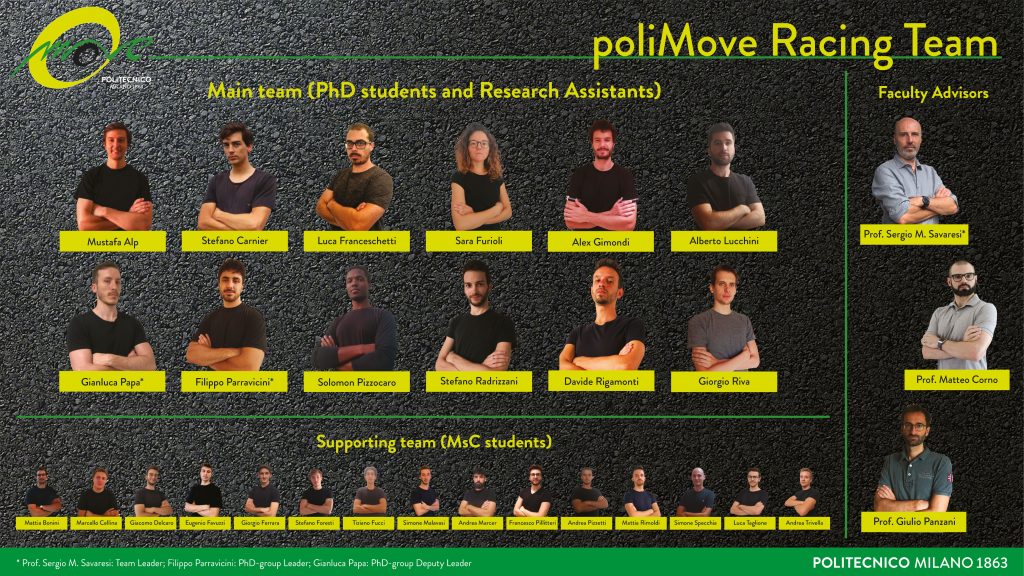The Indy Autonomous Challenge is a $1.5 million competition between universities to program modified Dallara IL-15 race cars. Teams will compete in the first-ever speed race for driverless cars running up to 300 kph around the famed Indianapolis Motor Speedway on Oct. 23, 2021.
28 teams of over 500 university students from 39 universities in 11 countries will compete on the Indianapolis track. Representing Italy is the PoliMOVE team of the Department of Electronics, Information and Bioengineering, led by Prof. Sergio M. Savaresi, one of the leading international groups in the field of automotive control, intelligent vehicles and smart mobility.

All the cars in the race will be identical to each other: the chassis is that of the Dallara IL-15, specially modified for driverless competition. No further mechanical, aerodynamic or engine modifications are allowed. Electronics and sensors are also the same for all teams. These are the technical constraints of the first Indy Autonomous Challange: the competition is 100% focused on the artificial intelligence algorithms that will be developed by the teams.

Teams are already competing in the simulation qualifiers (and Polytechnic is consistently placing in the top spots). This competition is also an opportunity for Polytechnic researchers and students to develop a complex problem in autonomous vehicle design. The main team is constituted by PHD students, while the support team is made by graduate students that are following a special extracurricular course. Is a multidisciplinary course composed of computer engineers, automation engineers, electronic, mechanic and areospace engineers. Some of the students were already part of Formula Student (we have talked about in in the firs number of MAP).
"The race is spread out over a year and a half, as in fact registrations closed in March 2020. Essentially there is a first part that will end next May 27 with the Simulation Race, where everything is done and developed in simulation and after which the experimental part begins," Savaresi tells Formulapassion.it (read his full interview here). "Ideally the simulator should be a faithful replica of what happens in the car, so in an ideal world we can take the code, bring it to the real car and within a few days in theory it should work. The transition to the real vehicle however is not trivial, but everything has been structured to be very realistic. The team of Politecnico di Milano is distinguishing itself and in particular we won the second hackathon. [...] We just finished the third one, where we ranked second. Actually, this event was faced in pairs and we were competing with the University of Munich. We won both batteries, but the final ranking was based on overall time. We set the fastest lap time and potentially could have won, but in race two the University of Munich was going slow, giving us a bit of a plug at the beginning and costing us time to pass them. We finished second in the end, but we are still happy," concludes Savaresi.
Partecipation to the Indy Autonomous Challenge is one of the many research and innovation initiatives of our university. Find out how to contribute to the creation of a Scholarship for one of our best student or for a research grant for a young researcher: Give now
Cover photo from Indy Autonomous Challenge